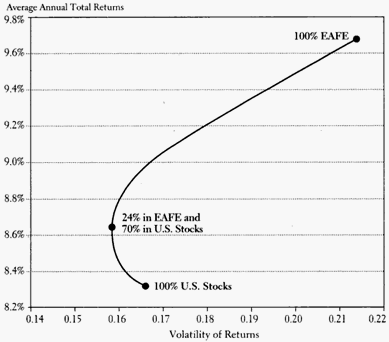How to Compare Risk Adjusted Returns in Your Portfolio
Post on: 27 Май, 2015 No Comment

By: Investor Solutions
By: Investor Solutions
Maximizing the risk efficiency of your portfolio can have a dramatic long term impact on your returns, and more importantly your wealth. By default, investors are risk averse. So, if you are going to assume some risk in your portfolio as a trade off for a higher return, you should strive to get the most bang for your buck. How? You utilize a financial formula designed to identify how you can maximize the most return per unit of risk that you feel comfortable assuming.
The formula in question is called the Sharpe Ratio. named after its creator, Nobel Laureate and Stanford Economics Professor William Sharpe. With it, investors can measure how effectively a fund utilizes risk, and compare funds with different risk profiles.
The formula is constructed as follows:
The Sharpe Ratio measures a funds returns in excess of the risk free rate (usually 90 day Tbills) for a given period (usually 36 months) and divides it by the standard deviation (a statistical measure of risk) of those returns in the given period. The higher a funds Sharpe Ratio, the better the funds historical risk-adjusted performance. A high number means you get more return per unit of risk, as depicted in the following search for International Large Value funds:
There is no benchmark for Sharpe ratio values. And standing alone, the ratio does not mean much. In order to be useful, the numbers should be compared with the Sharpe ratio of other funds. For instance, if we compare a balanced fund with a pure growth fund, the Sharpe ratio will produce a risk adjusted measurement that not penalize the balanced fund for holding some bonds.
While the Sharpe ratio is a great tool for measuring risk, its not perfect. For instance, if a particular asset class is on a roll and does not experience a great deal of volatility, return per unit of risk does not necessarily reflect a portfolio managers genius. A good example of this was the behavior of tech funds in from 1998 to 2000: momentum drove returns straight up, and Sharpe ratios higher. But, tech funds didnt experience the brunt of its sectors volatility until spring of 2000 when the bottom fell out of the sector.
Despite its wide acceptance among academics and institutions, the Sharpe ratio is not well known among the general investing public. Modigliani and Modigliani (M&M) introduced a similar measure of risk in 1997. Since their measure is expressed in percentage points, M&M believe that average investors can more easily understand it.
The Modigliani measure states the funds performance as it relates to the market. This measure equals the return the fund would have received if it had the same risk the market index had. Like the Sharpe ratio, the higher the number the better. Since this measure is relatively new, its still early to tell if investors will embrace this concept with more understanding.
Mutual fund Sharpe ratios are published by some of the leading services like Morningstar, Value Line, Lipper, and Standard & Poors.
The decision to buy a fund should never be based on numbers alone. Among others, asset class representation, portfolio correlations, expenses, turnover, and style drift should always be considered when selecting a mutual fund. But, the Sharpe Ratio or Modigliani measure provide valuable information on management effectiveness.














